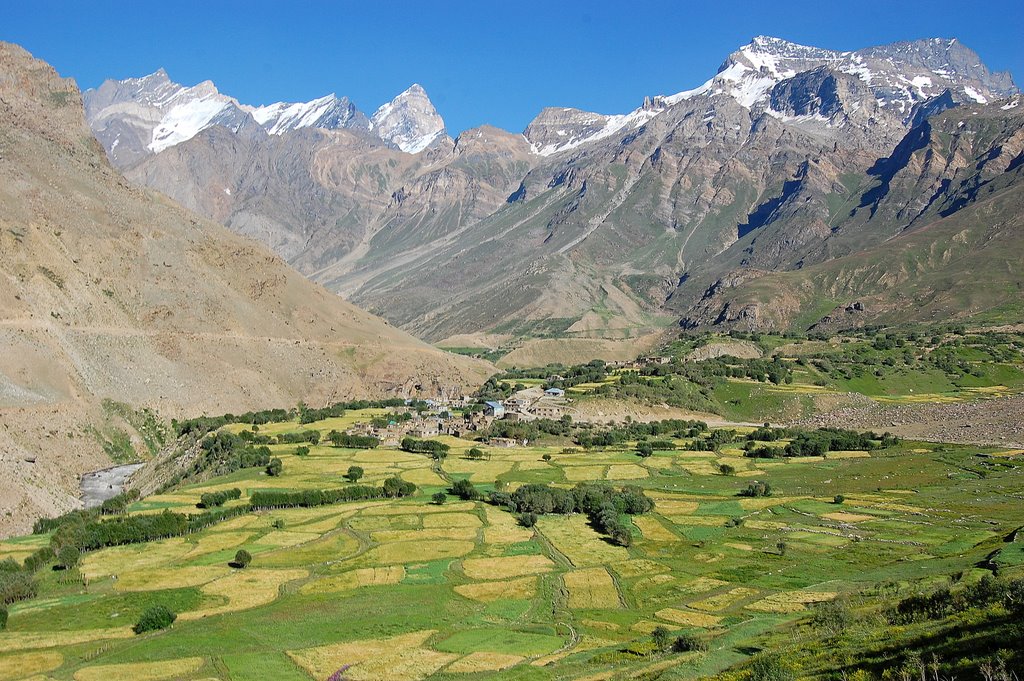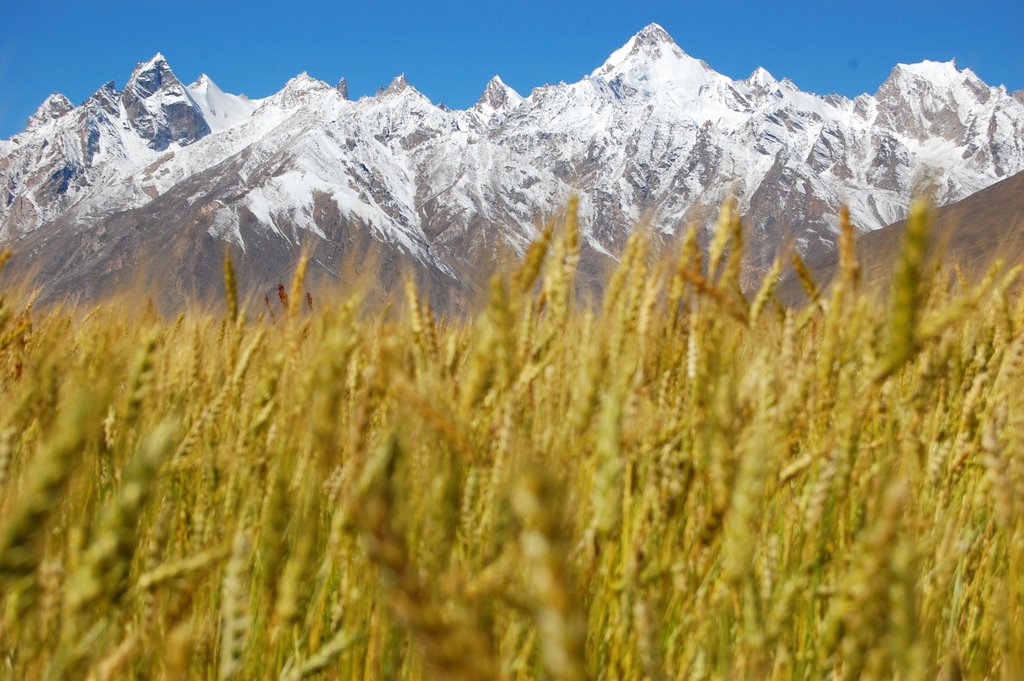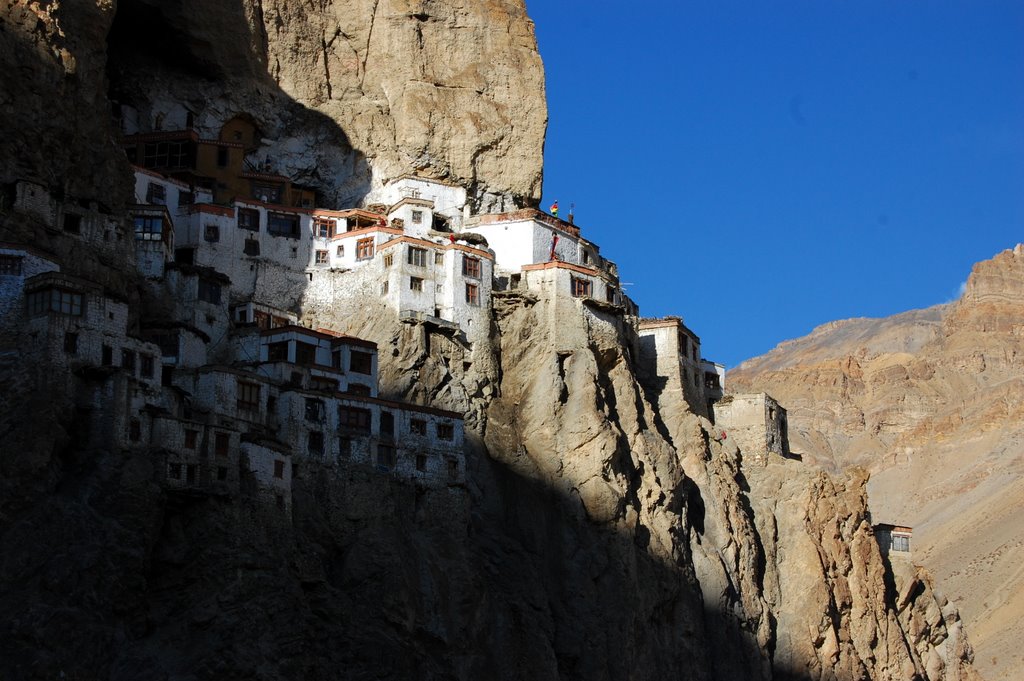Zanskar is a stunning Himalayan valley wedged in between the Zanskar and Ladakh ranges which tower up to 7,000 metres. For most of the year it is cut off from the rest of the world by snow and when the road is closed the only way to get into or out of the valley is by walking on the frozen Zanskar river for 9 days. It has a strong Tibetan culture coming from the days when it was part of the Tibetan Guge empire. If I had to choose my favourite place in the world I have visited so far this is probably it. To me it feels like home.

At first the main reason for coming here was to see the Dalai Lama who comes here once a year to do 3 days of talks about Tibetan Buddhism and meditation. I began my journey from Leh and after reaching Kargil I began to hitchhike down the valley which was an experience in itself. After my first day of hitchhiking I found a beautiful camping spot and then set off early the next day hitchhiking again in another fuel tanker. It was slow going and by nightfall we still hadn't made it. That night I slept under the stars on the lorry roof. As usual in the Zanskar valley the Milky Way was there in all its glory, and I spent the night spotting shooting stars. A beautiful but bitterly cold night! The next day we finally made it to Padum where I went to listen to the Dalai Lama speak for 3 days. I feel privileged to have been in his presence.......he definitely has something special about him.
From Padum I decided I was going to do a few days trekking and so I set off planning to start after visiting Karsha monastery. At Karsha monastery I started talking to one of the monks. After I had told him that I had experience teaching English he told me that the temple would really like an English teacher to teach the younger monks. As I had taken to Zanskar so much I decided to take up his offer, and so this is where I stayed for the next 2 or 3 months! The head lama kindly gave me a room in his little house in the temple grounds, with amazing views of the Great Himalaya range, which I was lucky enough to wake up to every day. I taught for about 2 or 3 hours a day, and the rest of the time lived just like the other monks, joining them for prayer times and practicing some meditation. I also had plenty of time for trekking into the mountains. From here you can pretty much head off into any direction you like.
In the middle of October it was time say goodbye. No more waking up to beautiful sunrises over the Himalaya's from my room. I was sad to leave but excited to start trekking for about 10 days south over the Great Himalaya range to get out of Zanskar before getting snowed in. It was a great trek! I paid a local man to be my horseman, and off we went staying in little villages along the way, far from any roads. I was lucky enough to stay with some of my horseman's family for a few days, and one of the highlights was staying at Phugtal Monastery, which hangs on a cliff edge and is also in a cave! Eventually we made it up to the snowy Shingo La pass (5,100 metres) where I said goodbye to my horseman and continued down for the last couple of days to Darcha in Himachal Pradesh.
With my students.



Hitchhiking down the Suru and Zanskar Valley.
Locals in their best dress to see the Dalai Lama!
A monk who looked after me and cooked for me when I stayed at Stongde Monatery.
The old royal Palace.
Karsha Monastery, where I taught English.
Views from my room at Karsha monastery.
Views of Karsha monastery from Karsha village. I loved walking through the fields during harvest time as families worked together to collect it all in at a leisurely pace. When jobs need to be done in Zanskar and Ladakh the whole community gets together to help each other and their is no conversation of money. As they work the fields they sing and stop regularly for tea breaks or for something a little bit stronger! They regularly invited me to sit with them as they had little picnics in the fields. Even when someone is building a house families will work together to help to build it building it in no time. Again it is not a question of getting into debt with a mortgage, but about the careful management of their local resources. Here the people are so in touch with nature. They plant a certain type of tree which is very fast growing, and they use these tree's to help build their houses. When they cut down a tree they instantly plant another in its place. I'm not saying that everything is perfect here. Life can be difficult and there is a high infant mortality rate mostly due to the extremely cold winters. And with the 21st century encroaching life is sadly changing here. But I really believe we can learn so much from this ancient culture.
Inside Karsha Monastery for breakfast and morning prayers.
Every morning the monks call everyone to prayer and breakfast using a conical shell horn.
Beginning the 10 day trek
At Phugtal Monastery

At my horseman's village with his children and family.
Going over the Shingo La pass (5,100 metres).
























































No comments:
Post a Comment